Power Consumption
Idle power consumption on 120V power we saw 11-14W idle for the quad-core unit. We generally assume these nodes will use 9-12W idle so this in that range. Again, these are used units so it may vary a bit.
The power supplies are 65W Dell power adapters from the company’s notebook line. Newer systems tend to use larger 90W power supplies since USB power requirements are so much higher. Since a third of the USB ports here are USB 2.0, we did not have those same demands.
At idle, the noise is not significant. Under heavier loads, the fan spins up and the system is audible. An advantage is that one can move this system to avoid direct noise by mounting it on the back of a TV or monitor, under a desk, or elsewhere. These are designed to be quiet so many of them can fill rooms of small cubicles or co-working desk space so these need to be designed to be relatively quiet for most daily use. If you have a set of server applications that use little CPU but a lot of memory, then that type of workload will keep this system quiet. If you are using the system for number crunching, it will get loud.
One item we noted is that our system was significantly quieter after a good cleaning. You can see the dust we received the unit with in several of our photos.
Next, we are going to discuss key lessons learned before getting to our final thoughts.
Key Lesson Learned for TMM
In this series, we wanted to also focus on some key lessons learned. Since we have already tested well over a dozen different models, we are taking away key pieces of advice from each that we wanted to share.
The faceplate in our unit was a source of comedy. It was missing one small plastic retention latch which seems to have broken. It arrived and initially looked OK. Then with a gentle push, the faceplate would just fall off. Our key lesson learned here is to simply double-check TMM units, like you would with anything, online before the return period is over.
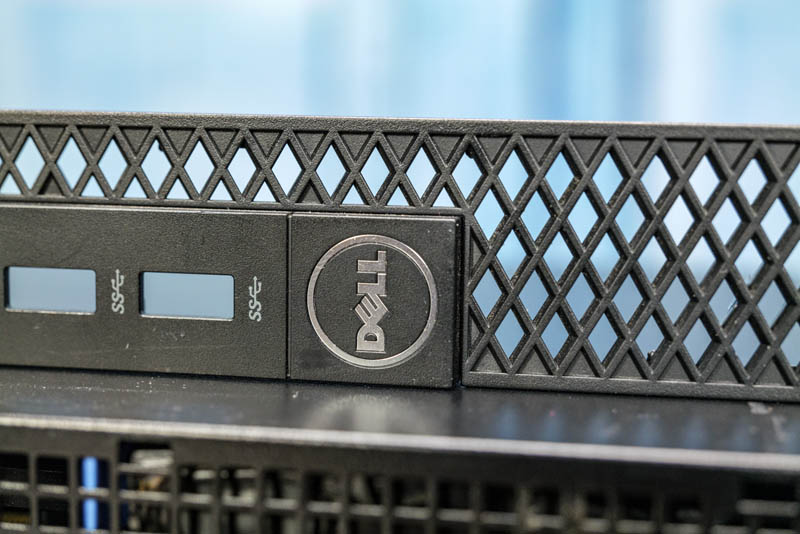
Just because we have a Core i5-6500T does not mean we get all of the features of the chip. As we mentioned earlier, we have a CPU that supports vPro, but the system does not. Beyond that, we also found a sticker in the inside of the top cover which said ME Disabled. We found the Intel Management engine was disabled in ours. It would be hard to see this sticker unless one opens the system and looks.
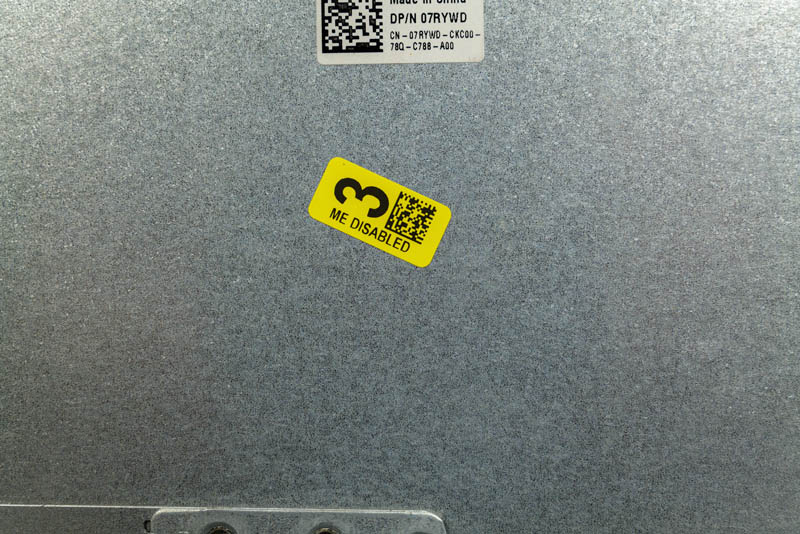
The Samsung 850 EVO 500GB SATA SSD is a fine unit. It is, however, not a standard Dell part. We have noticed some recyclers and sellers of these systems will have contracts to destroy data storage, but then will add aftermarket SSDs to sell systems. This is just something to look out for.
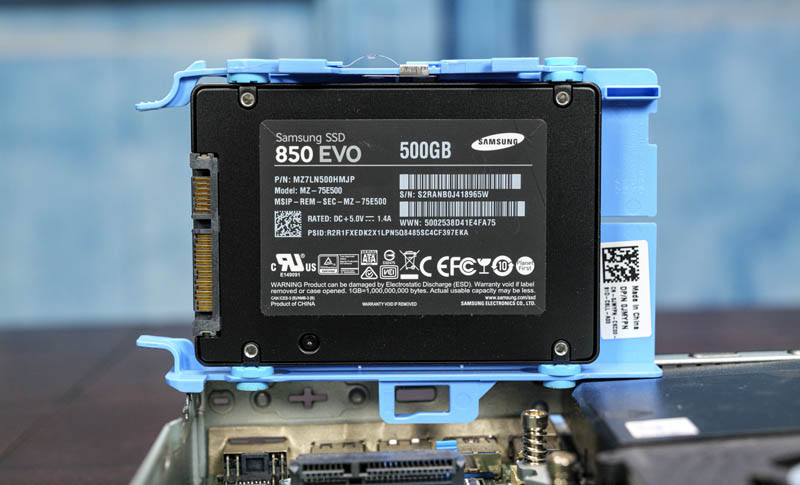
Pricing wise, the key takeaway was really that the Project TinyMiniMicro Dell OptiPlex 3070 Micro we purchased from Dell was a better value than this unit. To be clear, so were many of the Lenovo systems of this era.
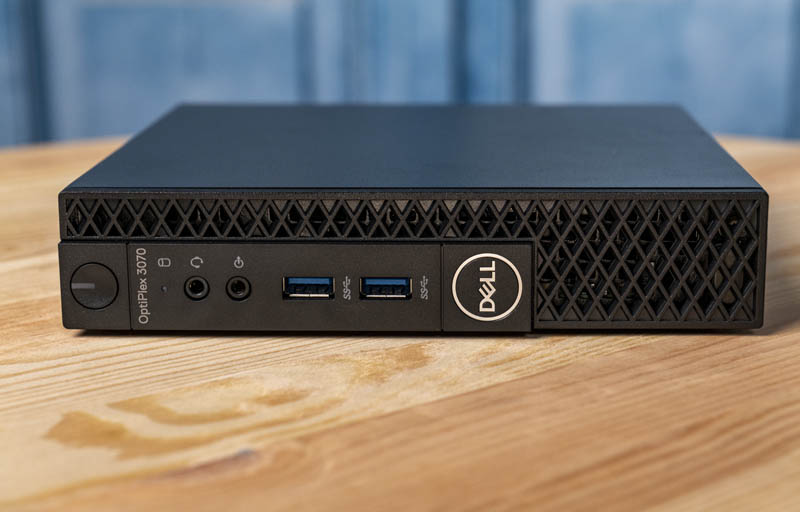
Final Words
On one hand, this system is very nice to use. Dell did a great job making the 3050 Micro serviceable. The tool-less approach Dell used in the low-end of this generation was a step ahead of Lenovo and HP. For around $340 with a Core i5-6500T, 16GB of memory, a 500GB Samsung SATA SSD, and Windows 10 Pro license, this was certainly a nice system and one we are happy with. At the same time, it seems like we got a better deal on the Lenovo ThinkCentre M900 Tiny. Also, the Dell OptiPlex 3070 Micro we purchased was directly from Dell with a warranty and would be priced very close to our used price here. Likewise, the Lenovo ThinkCentre M710q Tiny had a similar, if not slightly better spec and was less expensive. It is difficult to say we got a good deal. We are happy with the unit, but given the benefit of Project TinyMiniMicro knowledge, we should have done better shopping or simply purchased something else. That is the experience we are hoping to impart through our experience with Project TMM.
As we get to the later part of our Project TinyMiniMicro series, we are starting to see these trends and get both insights between vendors and generations. Hopefully as we move forward with our series the lessons learned will be filled with more insights.
The Dell OptiPlex 3050 Micro is a fine unit, but it is also one that one should not overpay for. Dell clearly did a great job on this system which may be why it was holding its value on the secondary market so well.

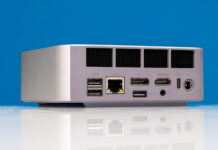
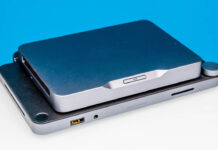
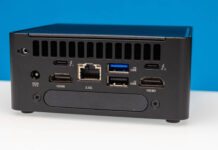
Are you planning on looking at https://www.dell.com/en-us/work/shop/cty/pdp/spd/wyse-7040-thin-client or similar Wyse terminal? Basically a Dell 7040m but a big plus for homelabbers is that they can be had with additional SFP port. I have two add-in SFP modules if you can’t find any around.
Do you, by any chance, have 2x 32GB DDR4 you could test in the 3050? I have a 3050 laying around and I’m curious. I don’t have the money for 64GB RAM in such a machine, but I’m asking purely out of curiousity.
Got one of these quite cheap off of a local buy/sell website.
Came with a cheap SSD, 8GB of RAM and i5-7500T, but no WiFi.
Can confirm that 7th gen i7-7700t works like a charm!
Had to enable Hyperthreading in BIOS as it was disabled by default on mine.
I’ve also added 2x16GB of RAM, a 480GB A400 SSD, and a 500GB NVMe-drive.
Next up is attempting to add one of the newer WiFi6/Bluetooth Intel-cards.
I love the little thing!
Hi LA,
Did you install some of the newer WiFi6/Bluetooth Intel-cards?